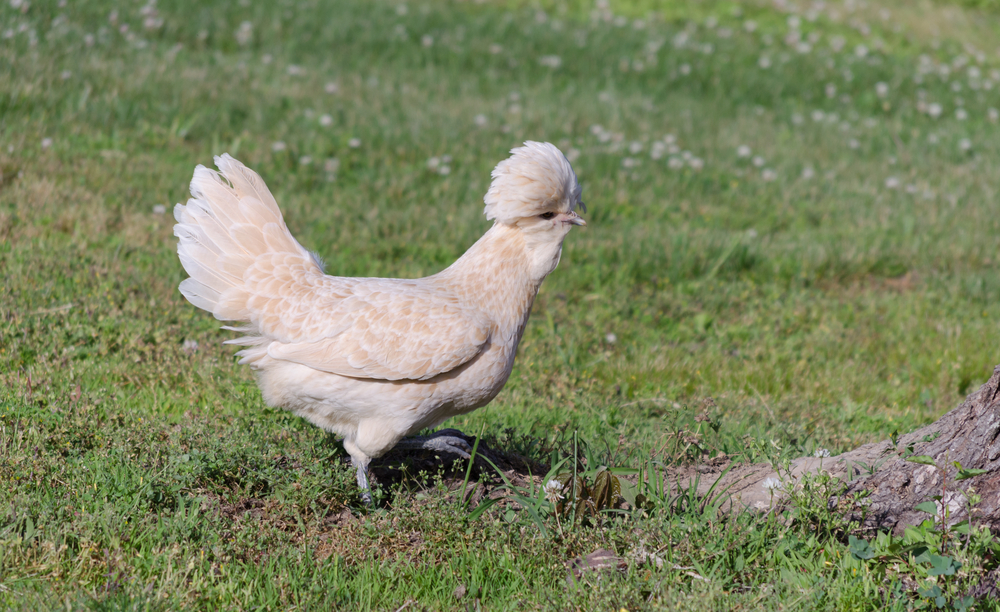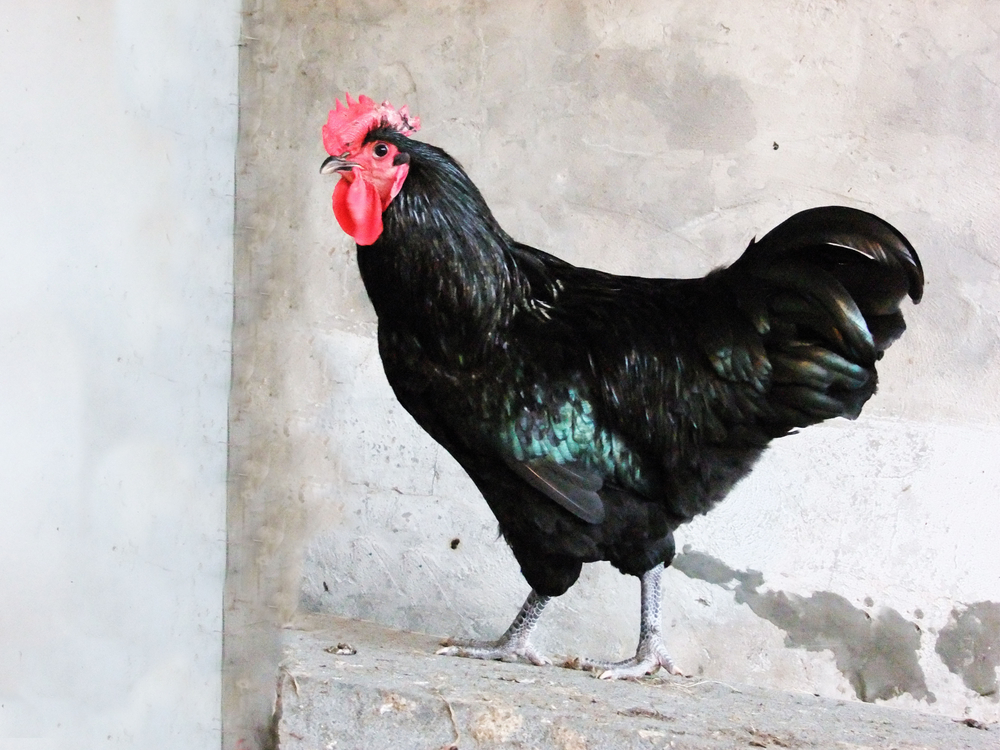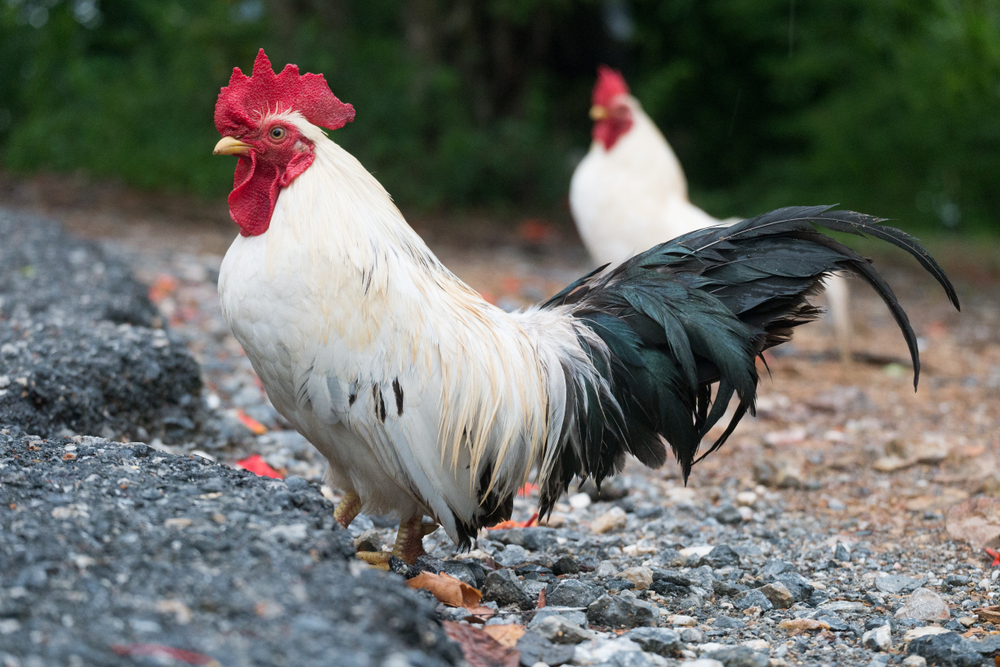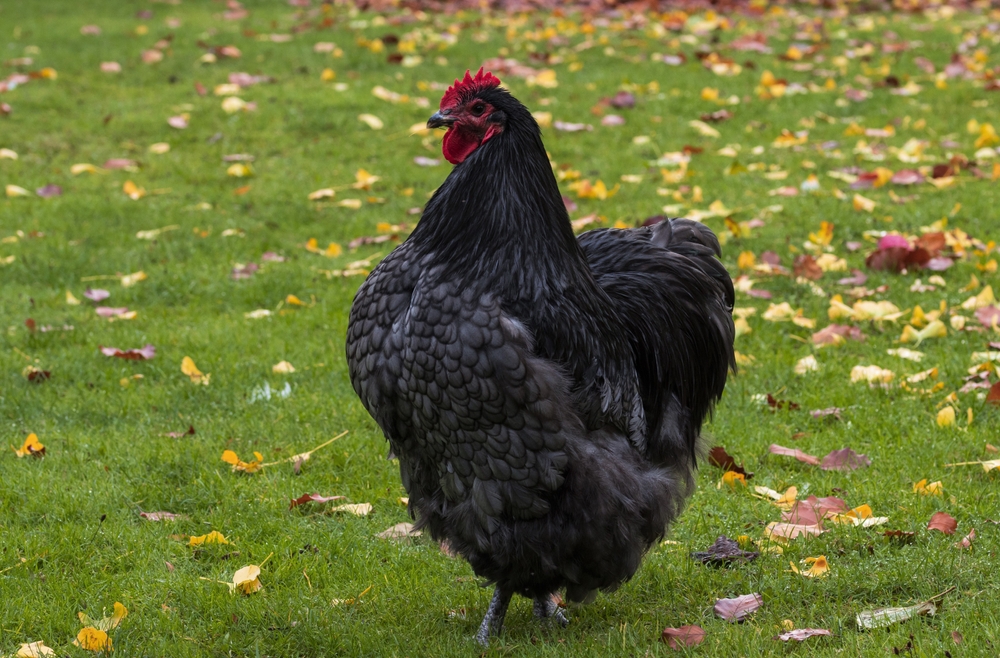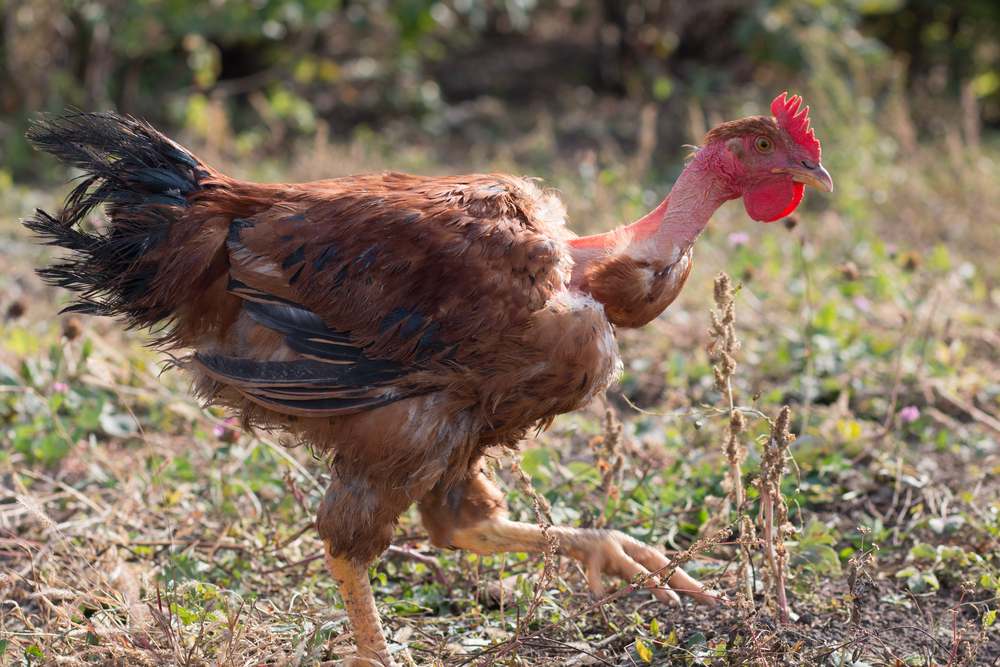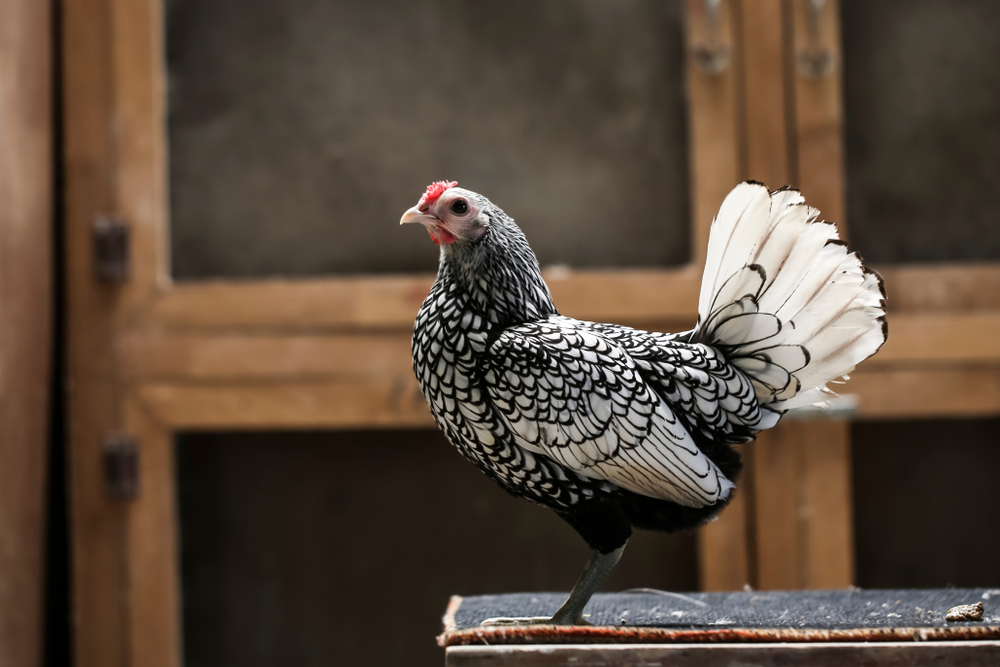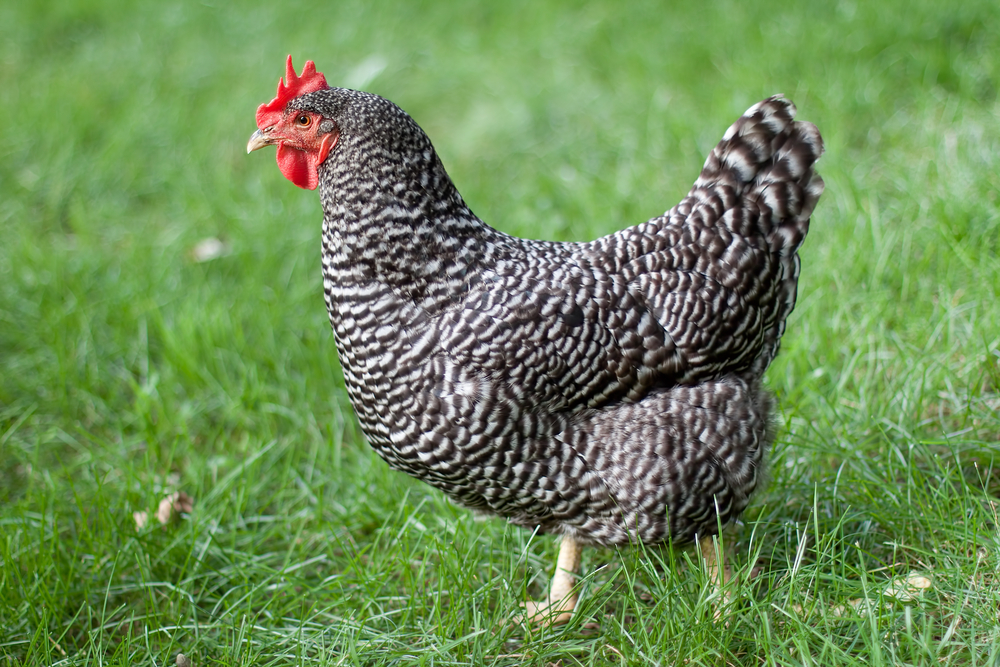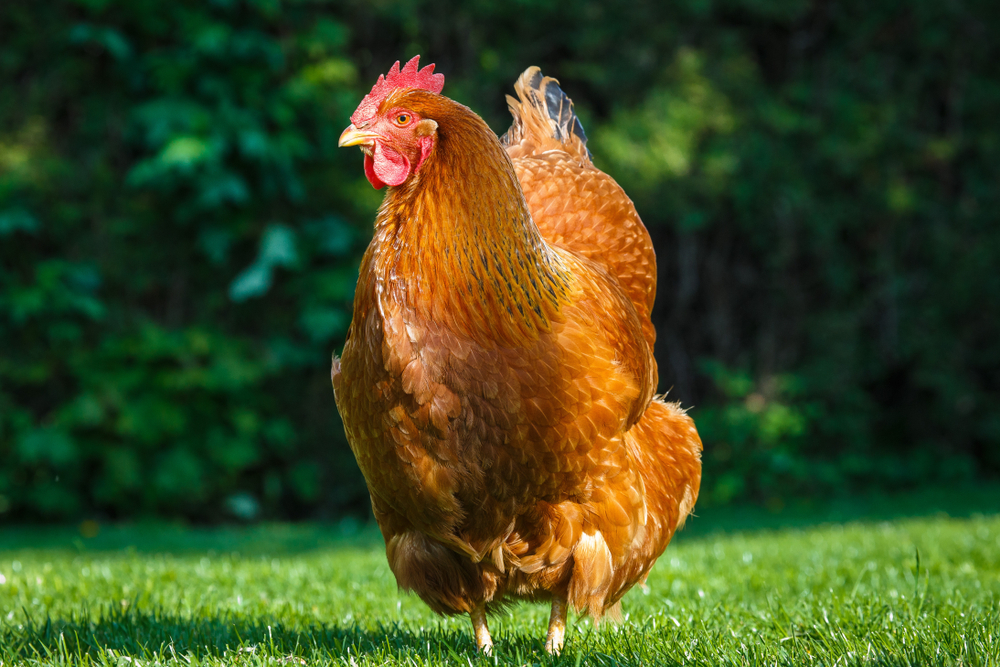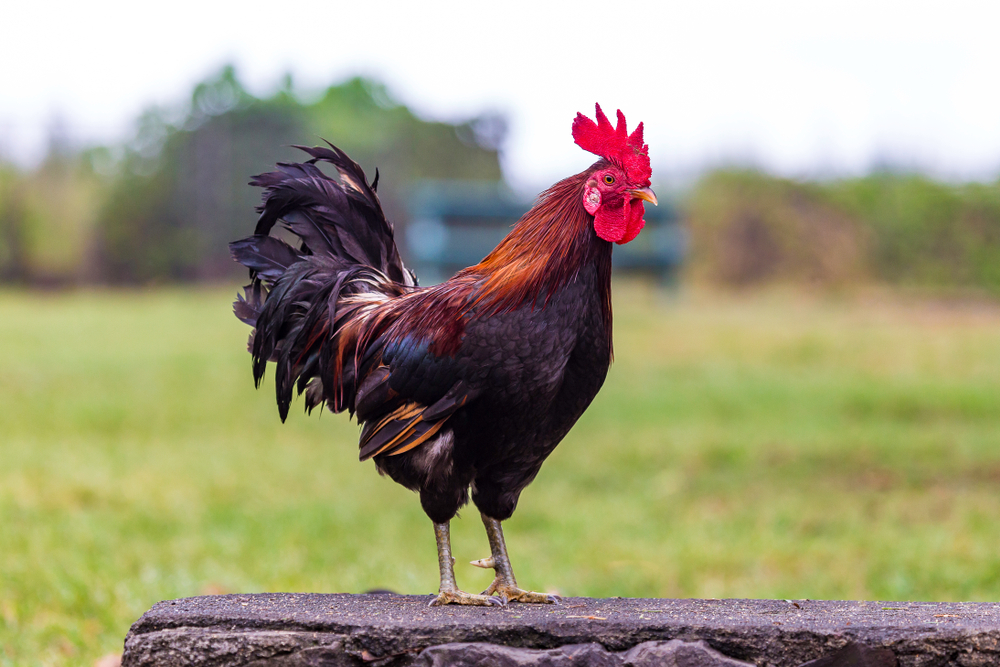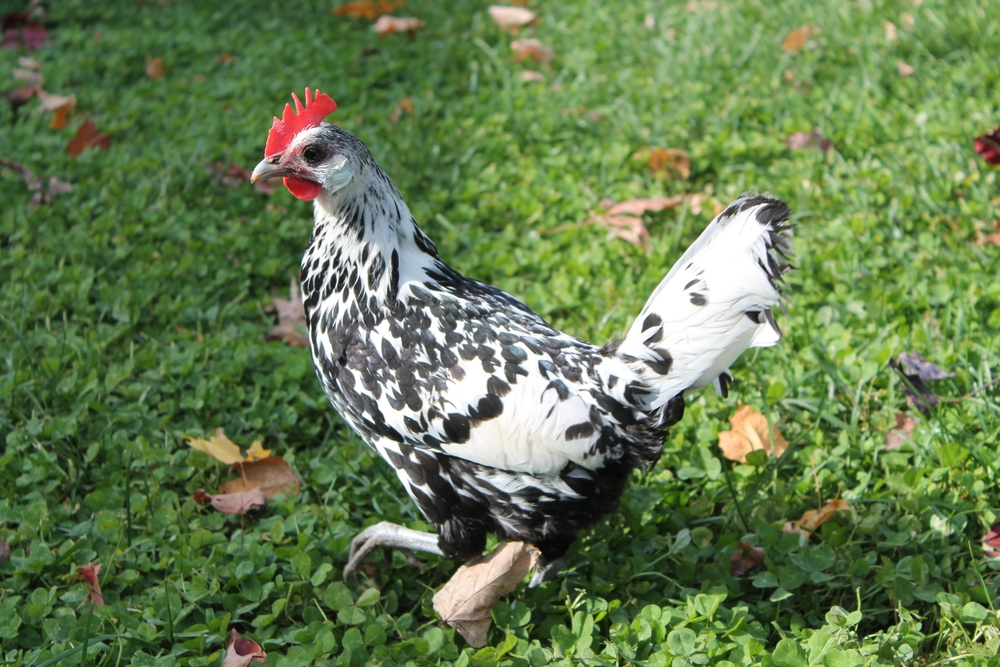The closest related breed to the Polish is the Crevecoeur, another European ornamental chicken with a distinctive crest. While both share a vaulted skull and ornamental feathering, the Crevecoeur has a V-shaped comb and is typically black, whereas the Polish comes in many color varieties and is more widely recognized in exhibition circles.
About
The Polish is a striking ornamental chicken breed best known for its large, fluffy crest of feathers that forms a pom-pom-like “crown” on its head. Despite the name, its exact origins are uncertain—it may have roots in the Netherlands, though it became popular across Europe in the 16th–18th centuries, including in Poland. Over time, it was refined into both ornamental and utility varieties, with some kept for egg production and others purely for show.
Polish chickens are medium-sized, with roosters weighing about 2–2.5 kg (4.5–5.5 lbs) and hens around 1.6–2 kg (3.5–4.5 lbs). Their most distinctive trait, the crest, grows from a bony prominence on the skull and can be so large it sometimes impairs vision. They also often have a small V-shaped comb, adding to their unusual profile.
They come in a wide variety of colors and patterns, including white-crested black, golden-laced, silver-laced, and buff-laced. The plumage is soft and close-fitting on the body, with the crest being the standout feature.
While primarily ornamental today, some Polish varieties are fair layers, producing 120–150 small to medium white eggsper year. They are generally non-broody and can lay well into winter with proper care.
Polish chickens have friendly but sometimes skittish temperaments, partly because their limited vision from the crest can make them easily startled. They do best in predator-safe enclosures and dry conditions to keep their head feathers clean and healthy.
The Polish’s scientific classification is Gallus gallus domesticus, and it belongs to the family Phasianidae.
Physical Characteristics
Plumage:
Polish chickens are instantly recognizable for their large, rounded crest of feathers on the head, which can be smooth or bearded depending on the variety. Their plumage comes in many striking patterns and colors, including White-Crested Black, White-Crested Blue, Silver Laced, Golden Laced, Buff Laced, White, and Black. Feathers are smooth and close-fitting on the body, with the crest feathers often soft and flowing.
Head and Comb:
The most distinctive feature is the bouffant crest of feathers, which grows from a bony prominence called a vaulted skull. The comb is very small—either V-shaped or absent—and is often hidden beneath the crest. Wattles are small to medium, and earlobes are white. The beak is short, strong, and horn-colored, with large, alert eyes (often partially obscured by the crest).
Body:
The body is compact and well-proportioned, with a straight back, full breast, and an upright, elegant carriage. Despite their ornamental look, they are lightweight and agile.
Legs and Feet:
The legs are clean (feather-free), slender, and slate-blue or gray in color, with four well-spaced toes. Their lighter build makes them quick movers, though the large crest can reduce peripheral vision.
Tail:
The tail is full and carried high, with roosters having long, arching sickle feathers. In hens, the tail is shorter and more compact, complementing the rounded body profile.
Size:
-
Male Weight: 6 lbs (2.7 kg)
-
Female Weight: 4.5 lbs (2 kg)
-
Bantam Variety: Males around 26 oz (740 g), females around 22 oz (625 g)
Sexual Dimorphism:
Males tend to have a looser, more spiky crest, while hens’ crests are rounder and more compact. Roosters also have more prominent sickle feathers and slightly more upright posture.
The Polish’s ornamental crest, wide variety of color patterns, and refined body type make it one of the most instantly recognizable and elegant chicken breeds in the world.
Reproduction
Mating Behavior:
Polish roosters are generally docile but active breeders, using typical courtship behaviors such as tidbitting and short chases. Their large crests can sometimes obscure vision, which may slightly affect mating efficiency if the crest feathers are not trimmed. A recommended breeding ratio is 1 rooster for every 6–8 hens to maintain good fertility.
Breeding Season:
They can breed year-round in mild climates, though the most productive period is spring through early summer. In colder climates, breeding is best done when temperatures are moderate to avoid stress on chicks.
Egg Laying:
Polish hens are fair layers compared to utility breeds but produce consistently during their laying season.
-
Annual Output: 100 to 150 medium-sized eggs per year.
-
Egg Color: White.
-
Egg Size: Medium.
Broodiness and Incubation:
-
Polish hens are rarely broody, making natural hatching uncommon.
-
Most breeders use incubators or foster hens from more broody breeds.
-
Incubation Period: Around 21 days.
-
Chicks are delicate in the first few weeks and require protection from drafts and damp conditions.
Chicks:
-
Appearance at Hatch: Small and fluffy, with a noticeable bump on the skull that will develop into the adult crest. Down color varies by variety.
-
Self-Sufficiency: Active but can be more vulnerable to predators due to their tendency to be more curious than cautious.
-
Growth Rate: Moderate; crest feathers begin developing within the first month.
Maturity:
Pullets typically begin laying at 5 to 6 months, while roosters reach full breeding maturity at a similar age.
The Polish’s low broodiness, delicate chicks, and ornamental focus make it a breed that benefits from attentive, hands-on breeding management.
Lifespan
Lifespan in the Farm/Backyard Setting:
Polish chickens typically live 5 to 7 years in well-managed flocks. Since they are primarily kept for ornamental and exhibition purposes rather than high production, they often maintain good condition well into their later years if protected from predators and environmental stress.
Lifespan in Optimal Conditions:
With excellent nutrition, secure housing, regular health checks, and minimal stress, Polish chickens can live longer than the average ornamental breed.
-
Average Maximum Lifespan: 7 to 9 years
-
Exceptional cases: 10+ years, especially for birds kept as pets or in controlled show environments.
Threats to Longevity:
-
Predation: Their large crests can obscure vision, making them more vulnerable to aerial and ground predators.
-
Climate Sensitivity: Less tolerant of extreme cold or wet conditions due to their feather structure, which can trap moisture.
-
Parasites and Disease: Prone to lice, mites, and fungal infections around the crest area if not kept dry and clean.
-
Injury Risk: Vision limitations from the crest can lead to accidents or difficulty finding food and water without trimming.
Adaptations for Longevity:
Polish chickens are alert, active, and lightweight, which helps them evade some predators when in open, safe spaces. In warm, dry climates with good housing, they remain healthy and active for many years.
Eating Habits
Diet:
Polish chickens are omnivorous foragers, thriving on a combination of commercial poultry feed and naturally sourced foods.
-
Primary Feed: High-quality layer pellets or mash with 16–18% protein, plus calcium for strong eggshells.
-
Foraged Foods: Insects, worms, small beetles, seeds, grasses, and tender greens found while roaming.
-
Treats and Supplements: Millet, cracked corn, leafy greens, grit for digestion, and oyster shell or limestone for calcium.
Feeding Behavior:
-
Polish are curious, active feeders but may be less competitive at feeders if kept with more assertive breeds.
-
Their large crests can obscure vision, making it important to have feed and water positioned where they can easily find it—or trimming crest feathers for better visibility.
-
They eat less overall than heavier dual-purpose breeds but require a nutrient-rich diet to maintain plumage quality.
Foraging Times:
-
Most active in morning and late afternoon, with midday spent dust-bathing or resting.
-
In hot climates, they prefer shaded foraging areas to avoid overheating.
Adaptations for Feeding:
-
Short, fine beaks allow them to pick small seeds and insects efficiently.
-
Light build enables them to move quickly over ground in search of food, though reduced vision from the crest can limit foraging range.
Captive Diet Management:
-
Balanced feed is essential to maintain feather health, particularly for show-quality birds.
-
Avoid overfeeding high-fat treats to prevent obesity, which can impact activity and exhibition condition.
-
Elevated feeders or covered feeding areas help keep their crests clean and dry while eating.
Polish chickens’ dietary needs for high-quality nutrition, combined with their vision-related feeding quirks, make attentive feeding management important for both health and show presentation.
Uniqueness
Signature Feather Crest:
The Polish is world-famous for its large, rounded crest of feathers, which grows from a vaulted skull and creates a distinctive ornamental “bouffant” appearance unmatched by most chicken breeds.
Wide Variety of Striking Colors:
Recognized in numerous color varieties—including White-Crested Black, White-Crested Blue, Silver Laced, Golden Laced, Buff Laced, White, and Black—the breed offers exceptional visual diversity for exhibition.
Historical European Heritage:
Despite its name, the breed is believed to have originated in the Netherlands, with its current form refined in Eastern Europe. It has been a popular ornamental and exhibition bird since the 15th century.
Hen and Rooster Crest Differences:
Males typically have a looser, more spiky crest, while females have a rounded, helmet-like crest—making them visually distinct even within the breed.
Ornamental Purpose Over Utility:
Bred primarily for show and ornamental keeping, Polish are admired for beauty rather than high egg production or meat value.
Personality and Temperament:
Known for being gentle, inquisitive, and friendly, though their large crest can make them more easily startled due to reduced vision.
The Polish’s vaulted skull, extravagant feather crest, and broad range of show colors make it one of the most elegant and instantly recognizable ornamental chicken breeds in the world.
Be the First to Share Photos of This Species.
FAQ’s
1. What is the closest species to the Polish?
2. How does the Polish compare to other chickens?
The Polish differs from most breeds in several ways:
-
Crested Head: Large feather crest and vaulted skull are rare traits in chickens.
-
Primary Purpose: Kept mainly for ornamental and show purposes, not for utility.
-
Vision: Crest can limit sight, affecting foraging and predator awareness compared to open-faced breeds.
-
Egg Production: Lays fewer eggs (100–150 annually) than most dual-purpose breeds like Rhode Island Reds or Leghorns.
-
Temperament: Generally gentle and friendly, but can be more easily startled.
3. What national parks provide the best chances to see a Polish?
As a domesticated ornamental breed, the Polish is not found in the wild. However, they can be seen at heritage farms, agricultural fairs, and rare breed exhibits, such as:
-
Weald & Downland Living Museum (West Sussex, UK)
-
Beamish Open Air Museum (County Durham, UK)
-
Old Sturbridge Village (Massachusetts, USA)
-
Colonial Williamsburg Rare Breeds Program (Virginia, USA)
-
Sovereign Hill (Victoria, Australia)
These locations keep Polish chickens as part of educational and conservation-focused livestock displays.



































































